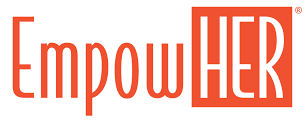Blog
Topics
POPULAR TAGS
Windows of Opportunity, Part 1
As we discussed in earlier posts, up to age four, your child’s brain is primed for, and receptive to, particular kinds of learning. The neuroplasticity of your baby’s brain allows him to learn at an accelerated rate. Yet, synapses form and are pruned at specific times and in specific brain locations, leading to critical windows for certain competencies to develop. But the actual timeline relates to your child’s experiences.
For example, at approximately eight months of age, development of the hippocampus, where language and learning live, is completed. For this reason, by this time, babies can remember what they have learned, meaning that they can respond appropriately. For example, when mother smiles, baby learns to smile back in response.
Timing is especially critical where language is concerned. Because the brain stem develops before the cerebral cortex, infants gain control of their five senses first, which means they start out being able to distinguish and imitate sounds, even if they can’t make sense of them. This receptivity of language begins four months after gestation.
Dr. Patricia Kohl from the University of Washington says that your baby learns the beginnings of her native language by listening to your voice in utero. Thus, your child is born into the world ready to learn whatever language he hears. If your child is exposed to many languages consistently during this window from birth to 4 years old, she can learn them all-as long as one language is spoken at a time-and she can learn it with greater ease and speed than at any other time in her life.
By three years of age, the portal of receptivity begins to close and the window for language acquisition actually begins to shut down by the age of five. This means that if a child learns a new language at the onset of adolescence, as is common in American schools, he may learn to speak the language, but will do so with an accent.
A vital window of opportunity exists for literacy as well. The best thing you can do to help your child read is to read to her early and often and, even though your newborn will not understand a thing that you are reading, she will benefit greatly from the sound of your voice, the warmth of your body, and the time spent together. If you pick a favorite book and read and re-read it consistently, your child will learn to anticipate what is to happen next. Soon, your toddler will learn to recognize familiar words as she starts to mimic your reading. By allowing your child to tell you the story as if she is reading it, without correcting her, she will ultimately connect the symbols she sees with the words on the page.
Like all learning, reading can happen early and easily if you are there to support it. You can also create a print rich environment by labeling objects in large print, as well as pointing out objects around the house and in the neighborhood.
The connection between language, reading and the development of your baby’s brain cannot be overemphasized. Talk to your baby constantly. Every word, song, story, and lullaby builds those critical synapses in the brain, the associative mass that builds more and more connections from which to learn. The language your baby hears helps prepare him to read. That is the first step that your child will take to read, but he won’t take it alone. Either you will be there to guide him by creating the correct atmosphere, or you will forfeit your role to a babysitter, nanny or daycare.
In my next post, we’ll discuss more about compensating for your time away from your baby, as well as just how critical these windows of opportunity really are.





